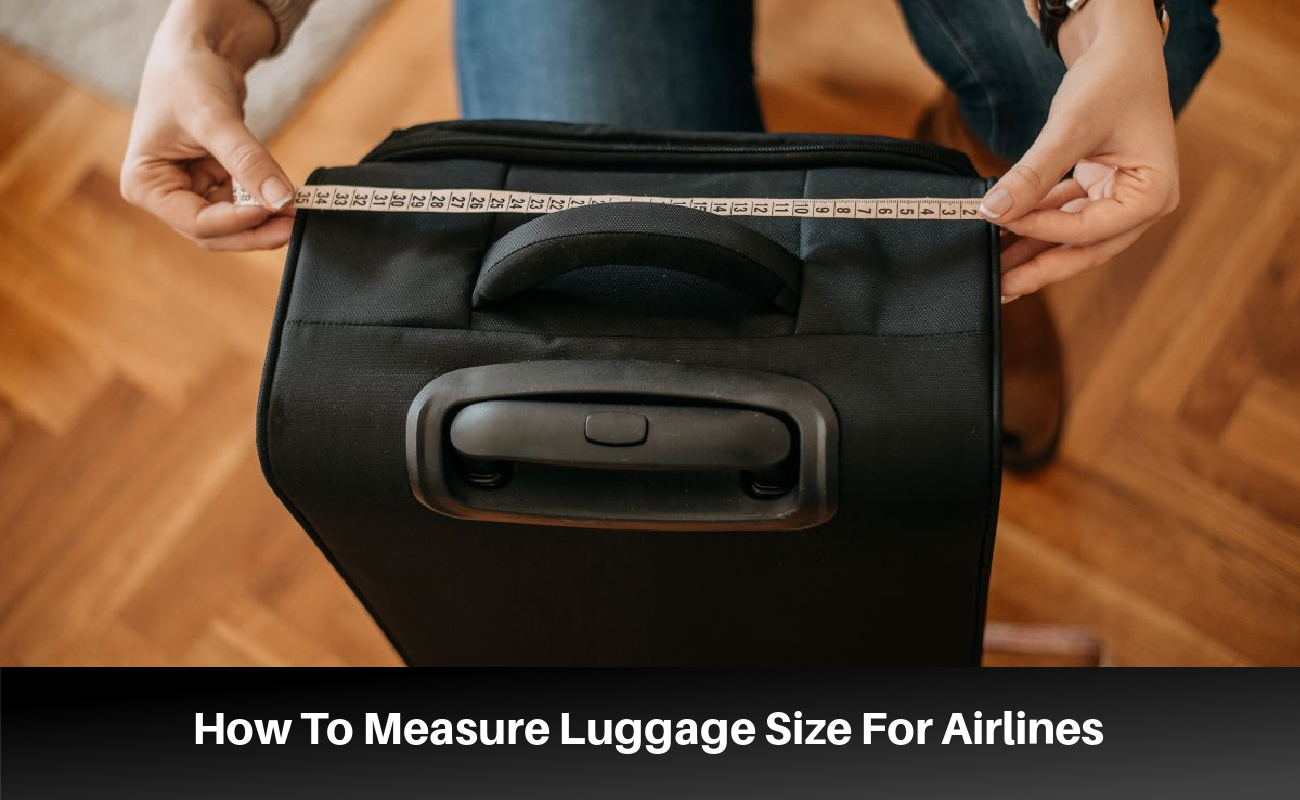You need to measure your luggage correctly to avoid paying unexpected luggage fees. Otherwise, you could pay over 250$ in oversized or overweight luggage fees. To measure your luggage size, all you need is a measuring tape.

How To Get Correct Luggage Measurements At Home Using A Tape Measure
- Place your suitcase next to a wall facing upwards (to measure the height).
- Put a book on top of your suitcase, making sure that it touches the highest point of your bag and that it’s at a 90-degree angle from the wall.
- Mark the bottom of the book on the wall with a pencil.
- Measure the distance from the floor to the marked spot on the wall with a tape measure to get its height.
- To measure the width and depth, rotate your luggage accordingly and repeat steps 1-4.
Quick Guide: How To Measure Luggage Size For Airlines
- Find out your airline’s size restrictions. Always look for the official measurements from your airline’s website because other sources may not be up to date. Personal items usually need to be under 18 x 14 x 8 inches (46 x 36 x 20 cm). Carry-ons should be under 22 x 14 x 9 inches (56 x 36 x 23 cm). Checked bags should be under 62 linear inches (157 cm).
- Pack your bag. Before weighing and measuring your bag, always pack it full to avoid any surprises.
- Measure the height, width, and depth of your bag. Using a tape measure, take measurements of your bag from three sides – height, width, and depth. Always measure at the widest point, including anything that’s sticking out.
- Weigh your luggage. Using a regular bathroom scale or luggage scale, take note of how much your bag weighs in pounds or kilograms.
- Calculate linear inches, if necessary. For checked luggage and occasionally for hand luggage as well, you’ll need to calculate the linear inches of your bag. This means the sum of the height, width, and depth of your bag. If you measure your carry-on to be 22 x 14 x 9 inches in size, then it’s 45 linear inches (22 + 14 + 9). In the metric system, the linear measurement calculation process is identical, just in centimeters.
Wheels And Handles Need To Be Included In The Luggage Measurements
Airlines always measure luggage at the widest point. So when measuring your luggage, always pack it full to make sure that its real measurements aren’t larger. Many luggage manufacturers list luggage sizes without wheels and handles. If you read the fine print, you’ll probably find the overall size, which is the correct size that you’re looking for.
Your Luggage Can Be 1-2 Inches Over The Size Limit
For carry-on luggage and personal items, airlines require passengers to fit their luggage inside measuring boxes at the airport. So, if your bag is flexible, you might get away with slightly oversized bags by squeezing them inside.
Airline employees very rarely use measuring boxes. They only require passengers to use them if their baggage looks extremely large. They’ll let you pass if it looks like it’s most likely within the size limits. So even if your hardside bag is 1-2 inches over the limit, you won’t have any issues most of the time.
For checked bags, airlines use a tape measure to get measurements of the height, width, and depth and to calculate the linear inches. So, when measuring checked luggage, the measurements can be less precise.
If your checked bag exceeds your airline’s weight limit, it might be marked as overweight and allowed onboard for extra fees. The most common weight limits for checked baggage are 50 lbs (23 kg) or 70 lbs (32 kg). Most airlines allow overweight bags onboard for an additional fee of 50-300$ per bag, but they’re still limited to 70-100 lbs (32-45 kg) maximum. Not all airlines allow overweight bags, so you must find the exact rules for the airline you’ll be flying with.
